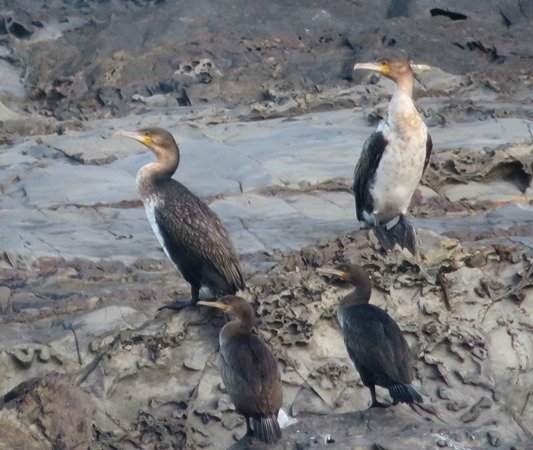Whitebreasted cormorants

Whitebreasted cormorants, scientifically known as Phalacrocorax lucidus, are found throughout southern Africa, except for an inland region in the Northern Cape, Namibia and Botswana. Further distributed almost worldwide, these birds live by the sea and at inland waters including deltas, estuaries, mangroves, dams and pans.
They are quite large birds, (from 80 cm to 1 m and up to 3,7 kg), black above with greenish gloss and variably white from the chin to the upper belly. Other underparts are black, while breeding birds usually have white thigh patches and nonbreeding adults are browner. Immature birds are dark brown above and off-white below.
Usually silent, breeding birds produce guttural sounds like grunts, hisses and growls. This cormorant can be either gregarious or solitary, often seen perched erectly, or flying fast and low over water with neck and head outstretched; sometimes perched with wings spread widely, possibly drying. When alarmed, whitebreasted cormorants swim with the body partly submerged. Their diet is fish, frogs, molluscs, reptiles and crustaceans. These cormorants are good swimmers and will pursue prey, including fast-swimming fish under water.
The breeding season is variable, sometimes all year round, the nest a coarse stick platform in a tree or on the ground, often built together in large breeding colonies that are used repeatedly for years. Two to four eggs are laid, greenish blue with chalky white overlay.
The eggs are hatched in four weeks by both birds, after which the chicks are cared for by both (monogamous) parents for about 53 days. The chicks are fed from regurgitated food. Less than half the chicks survive the first year, although the life expectancy for an adult bird can be 25 years (Maclean, 1993; www.bing.com; Wikipedia).

